Archival material of the 1940s shows that the British supplied arms to Tibet and a movie projector to the Dalai Lama and even made vain attempts to send an elephant to him.
EDMOND CANDLER’s book The Unveiling of Lhasa(1905) had described Britain’s relationship with Tibet as something akin to “the dilemma of a big boy at school, who submits to the attacks of a precocious youngster rather than incur the reputation of ‘bully’”.
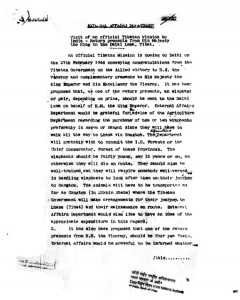
However, two interesting files in the external affairs section at the National Archives in New Delhi dispel the myth of British benevolence. Before leaving India, the British were desperate to maintain their toehold in Tibet. The 1946 files explicitly show that they were a benign bully in the Tibetan game. On the one hand, the 11-year-old Dalai Lama was sent a movie projector, and on the other, violence was planted at Lhasa through the supply of arms.
The documents show that China’s sovereign claims in Tibet were as important to Chiang Kai-shek in the 1940s as they were to Mao Zedong in the 1950s. That the sustained supply of British arms to Tibet played a crucial role in disturbing peace and tranquillity there is evident from these official documents, demanding a fresh perspective on history.
The search for a ‘return gift’
On February 26, 1946, an official Tibetan mission arrived in Delhi with gifts for the King and the Viceroy and a congratulatory letter on the Allied victory in the Second World War. The bureaucrats in the External Affairs Department got busy on the Tibetan front.
Overwhelmed by the Dalai Lama’s gesture, both English and Indian bureaucrats of the British Empire worked overtime to locate a suitable “return present” for the Dalai Lama. The file noting of April 9, 1946, by H.S. Dayal, Deputy Secretary, proudly announced: “It is good news a nice elephant is available at Bhor” (a princely State under Bombay Presidency) that can walk up to Gangtok for its onward journey to Lhasa.
Dayal’s enthusiasm to make the elephant walk from Bhor to Lhasa, via Gangtok, evoked some sound advice from the Agriculture Department: “The elephant cannot be moved on foot in hot weather. It will have to wait till September or October, and then might take 5 months to do 1,500 miles.” The officers in the department were then tasked to ascertain the sex of the Bhor elephant and get three different quotations.
A detailed report on the three available elephants was put up on file on May 21, 1946. The first option was a young male tusker from Bhor, priced at Rs.2,500. Second on the list was a 25-year-old female elephant, costing Rs.3,500, from Athamalik Darbar (one of the feudatory states of Odisha). Another option, a 50- to 60-year-old elephant from Indore (in northern India) for Rs.5,001, was wonderfully sold by Dayal as: “A big imposing tusker, trained one… smart appearance and magnificent gait.”
On the same day, the superior officer rejected all the three options. A new approach to procure the animal directly from the Conservator of Forests of Assam was pursued. The Foreign Secretary wrote to the Governor of Assam to enlist his help. Nepal’s help was never explored because of the fear that Kathmandu might hijack the idea.
In October 1946, the Railways expressed their inability to ply the animal. By end-November, the idea of sending an elephant was abandoned—the saga was finally buried on file in May 1947, when an officer reported that Nepal had sent two elephants to the Dalai Lama; one of them died on the way and the other reached Lhasa on April 6, 1947.
The vain efforts to produce an elephant were followed up by an equally zealous attempt to procure a 16 mm projector, a generator, and a stock of Donald Duck and Mickey Mouse series of films. The Dalai Lama’s love for movies comes out well in Brad Pitt’s 1997 movie Seven Years in Tibet, which shows the German mountaineer Heinrich Harrer working on setting up the movie projector and enjoying movies with the young Dalai Lama.
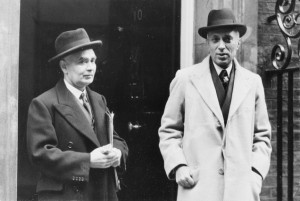
Arming the monks
Undeterred by the failure to participate in the elephant diplomacy, Dayal, Deputy Secretary V.M.M. Nair and their British colleagues in the Department of External Affairs engaged themselves in pushing the case for supplying mortars, guns, rifles and pistols to the Tibetans.
In February 1946, A.J. Hopkinson, political officer, Sikkim, and H.E. Richardson, the British trade agent at Lhasa, were given a list of weapons costing Rs.3,82,162. The list included 2” and 3” mortars, Bren and Sten guns, rifles, and Verey pistols. The purpose was to equip a brigade-level force at Lhasa.
Richardson’s job was to persuade the Tibetan commander-in-chief, Ragashar Dzasa, to make a requisition to purchase modern weapons from India. Richardson’s memorandum on May 29, 1947, to Hopkinson spelt out his marketing strategy: “I understand that the Tibetan government have unhappy memory of 1935 and are afraid that the Chinese Communists may eventually be driven to seek refuge in Tibet—a contingency which, although possibly remote, the Tibetan government would wish to be able to meet.” The official reasoning for the arms transfer rested on such flimsy arguments such as this: “In the present circumstances, the psychological and political effects of our refusal so soon after the assumption of office by the Interim Government… would be most unfortunate.”
That this act of direct interference in Tibet will “evoke vigorous Chinese protests” was well known to the External Affairs Department. However, the British officers C.B. Duke and L.A.C. Fry were confident that “the Chinese protest could be handled through an assurance and the observation that no protest had been evoked by the not infrequent similar transactions between India and Tibet over a long period of time”.
The project of arming peace-loving monks in Tibet had started immediately after the successful overthrow of the Qing dynasty in 1911. The spectre of a nationalist, republican regime in China asking questions about the British occupation of Hong Kong and other Chinese territory had led the British Crown to hurriedly convene the Shimla Convention and begin covert activities in the region.
The first tranche of British weapons for Tibet in 1914 included 5,000 rifles. From 1921 to 1933, Lhasa received 10,000 rifles, 10 mountain guns and 20 machine guns worth Rs.8,10,677. In 1937, four mountain guns, 10 Lewis guns and eight Vickers machine guns were exported from India. During the Second World War, arms supplies to Tibet were halted.
Post War, the business of arms supplies to Tibet was revived for two reasons. Firstly, prior to handing over India, the British had to consolidate their existing leverages in Tibet. Secondly, it was important to keep Tibet on the boil to use it as a bargaining chip to withstand future Chinese pressure relating to Hong Kong.
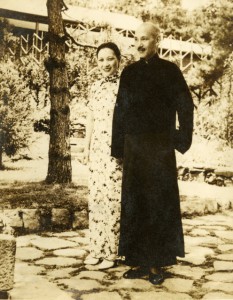
After the defeat of the Japanese, the Chinese nationalist party, Kuomintang, had started putting extra pressure on the British to decolonise Hong Kong and Kowloon, through protests by students and the Shanghai local government. Francis Yi-hua Kan’s paper in the 1999 Civil Wars journal says, “In January 1946, the Chinese government complained to the British that the plan to construct an airfield for the British Royal Air Force (RAF) violated ‘Sino-British unity’ on the grounds that the Chinese side regarded the action as a sign of a British intention to stay in Hong Kong for the long term.”
Direct deals with Indians
In September 1946, an interim government took charge in New Delhi. In the first week of October, the Chinese Charge d’affair in India, T.D. Tsien, sent a letter to Girija Shankar Bajpai, complaining against the up-and-down movement of two Tibetans and Richardson from Tibet to India to buy British arms.
Bajpai’s reply to the Chinese embassy in India was a diplomatic lie. He denied having any knowledge about the movement of personnel mentioned in the letter, barring Richardson’s visit which was explained as: “He was on short leave in order to have his teeth attended to at Calcutta.” Bajpai’s persistence with the British line led the Chinese to seek Jawaharlal Nehru’s intervention, with the hope that at least Nehru would view Britain as an outside power. In end-December 1947, Dr Lo Chia Luen, the Chinese ambassador to India, handed over an ‘Aide Memoire’ to Nehru.
The document highlighted two contentious issues relating to Tibet. The first pertained to the purchase of arms by Tibet, “clandestinely from a third power”. The ambassador’s memoire categorically stated: “Importing of arms and ammunition by Tibetan authorities from abroad has never been and will never be approved by the Chinese government. Such an act on the part of Tibet will be a source of serious trouble and may create a situation that would be detested both by China and by her friendly neighbouring power.”
The other issue raised by Chiang Kai-shek’s government was Tibet’s “intention to issue passports of their own to Tibetans wishing to go abroad through India”. The Chinese were perturbed that the Tibetan authorities were hobnobbing with the Indian Ministry of External Affairs and Commonwealth Relations to secure validity of their passports by the Government of India for transit purpose.

On Sino-Indian relations, the Indian strategic minds were shaped by British officials such as H. Weightman, the Secretary to the Government of India in the External Affairs Department, who insisted as late as in March 1947: “The Tibetans are entitled to equip themselves in a manner necessary to maintain internal security at a time when they are substantially autonomous. Indeed India would have grave cause for complaint if they failed to do so and disturbances occurred either in central or western Tibet on the Indian border with repercussions on our side.”
By April 1947, the Foreign Secretary had passed the orders to send weapons. By May 1947 the weapons minus the ammunition reached Lhasa. The Tibetan authorities thanked Nehru in a letter for ensuring their supply to Lhasa. Incidentally, in the 1947 Asian Relations Conference in India, Nehru accorded an independent status to the participating Tibetan delegation.
Now the matter rested on the exact quantity of ammunition to be given. L.A.C. Fry and Richardson suggested sending larger quantities of ammunition to Tibet. All departments of the Indian government accorded their approval. V. Doraiswamy of the Finance Department had no objection in offering loans to Tibet because the arms proposal was “based on political considerations and had the approval of H.E. the Viceroy”.
The General Staff Branch (MO1) and DWE 2A gave the assurance of provisioning the arms and ammunition. Only QMG Branch’s officer ADOS (Ammunition) raised an objection: he said that India did not hold any surplus stock of ammunition and that “the items of ammunition demanded can be made available subject to the condition that further depletion of India’s reserve stock of certain types is accepted”.
On October, 1, 1947, Lt Col (later Field Marshal) Sam Manekshaw, G 1 (Ops), approved 1,484,000 rounds for Tibet and remarked: “There appears no reason from the MO aspect why the demand should not be met in full.”
The other hitch came up when Pakistan refused to supply ammunition from its stock. To resolve this issue —just 10 days before August 15, 1947—V.M.M. Nair suggested: “Nowhere does Tibetan frontier march with that of ‘India’ or Pakistan and so neither is directly interested in Tibet but disorder within that country will have its repercussions, westward, towards territories in the neighbourhood of Pakistan and eastward, towards India. It would therefore seem reasonable that supplies should be drawn from the common reserve.” After two brief hold-ups, the ammunition finally reached Tibet in January 1948.
For Britain, Tibet was a trump card that could be used against the Chinese to preserve their colonial possessions in the Far East. Engineering an insurgency movement in Lhasa was quintessential to the continued colonisation of Hong Kong. Independent India did not have to bear the burden of Hong Kong and Macau. Then why did the Congress conservatives and socialists insist on toeing the British line on Tibet, leading the country into a frivolous war in 1962?
Source: Frontline

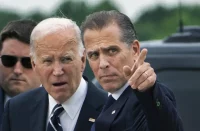
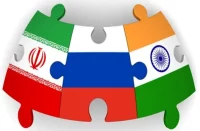



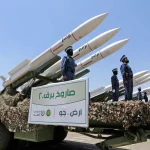
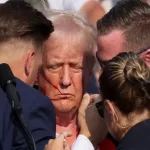






Pingback: White Lama & ‘Tibet Land’ | Oriental Review